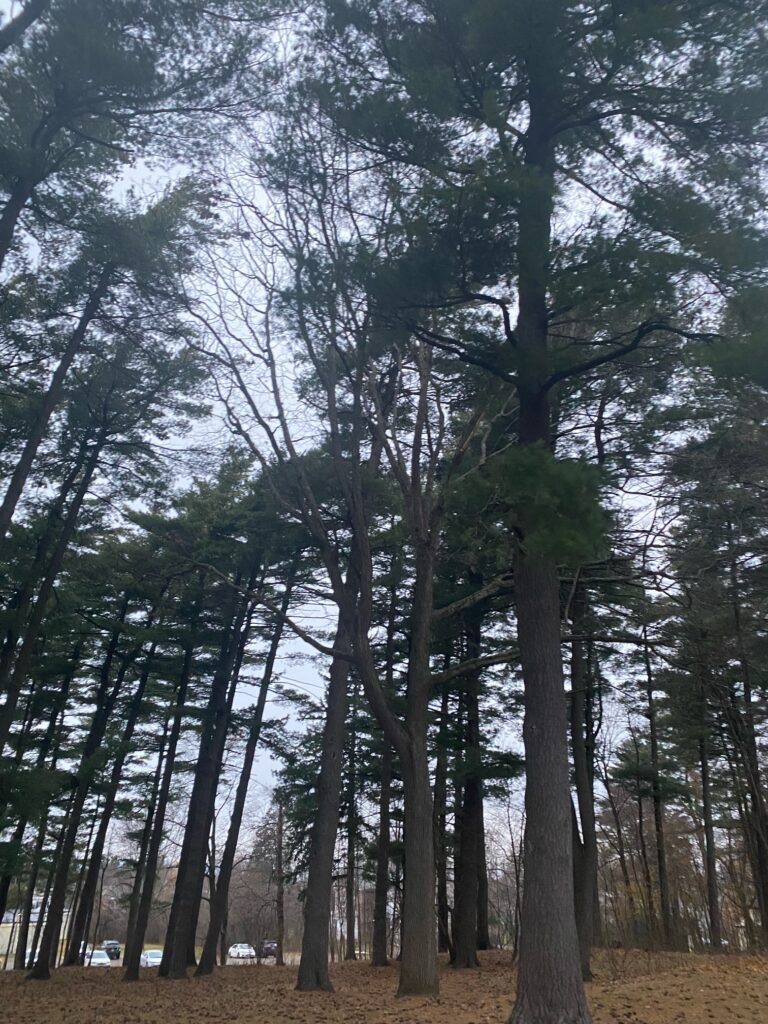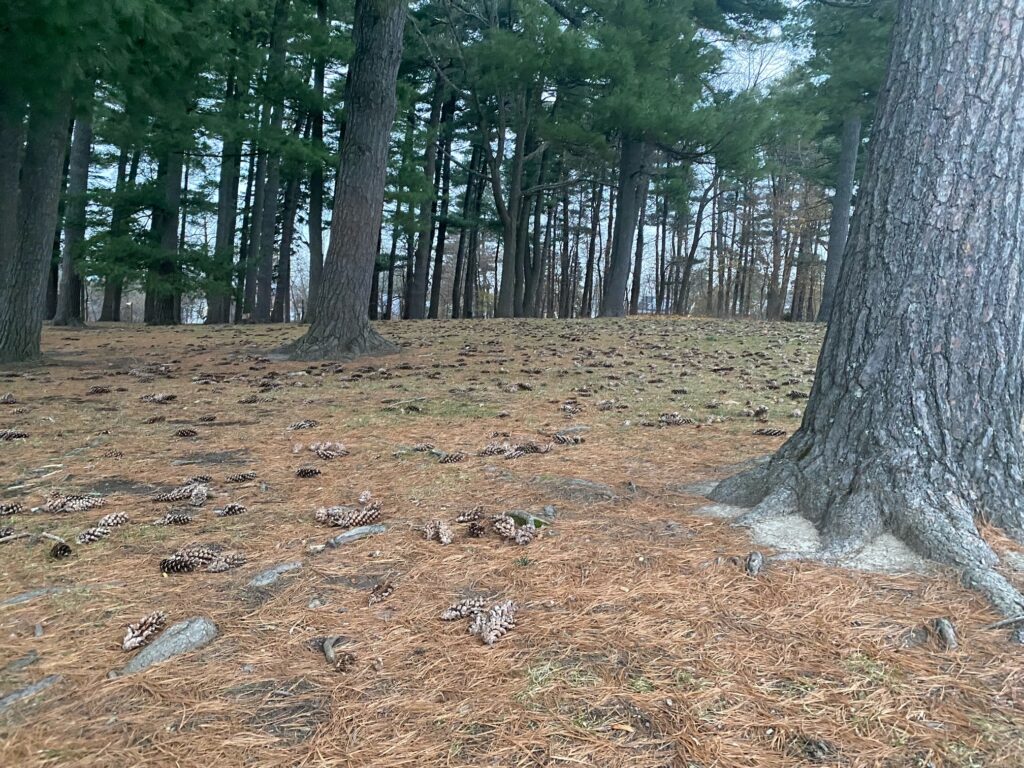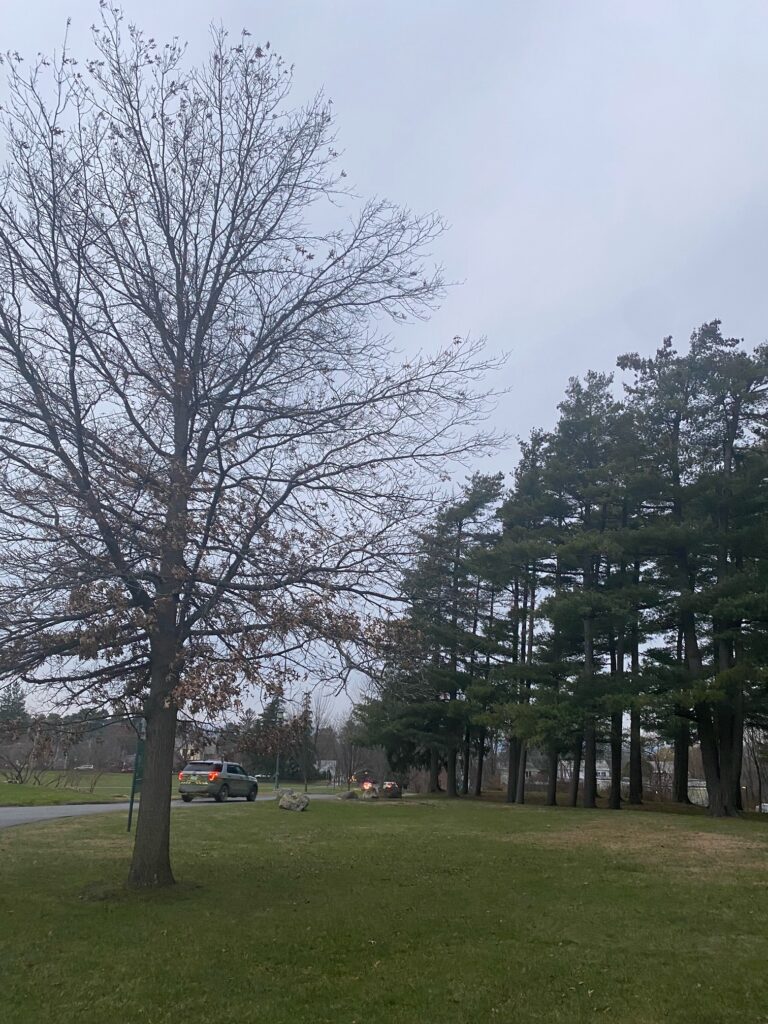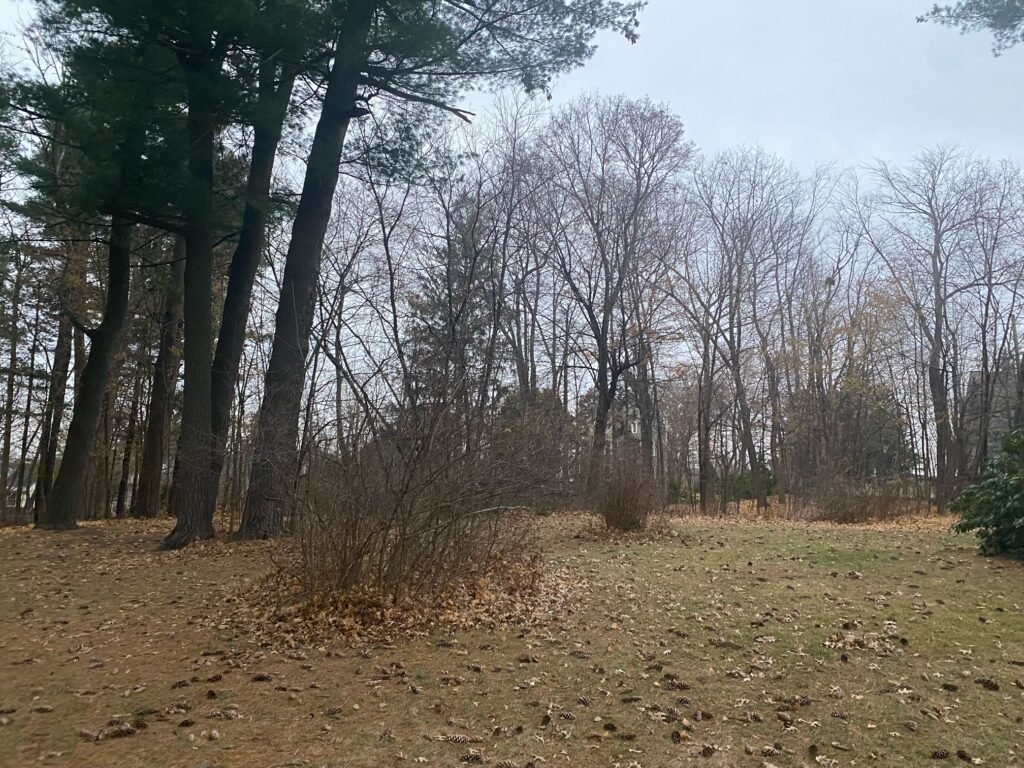During my final visit to Redstone Pines, the area was cold and gray. No students were gathered beneath the pine trees. Old trash from warmer days littered the grass and I wished I could gather all of it. The day after I visited, it snowed, so as I write this the Pines have a slight dusting of snow.

The namesake trees at the Redstone Pines, the Eastern White Pine, are hearty conifers that hardly falter due to weather. These towering trees have remained green through the changing of seasons.

The ground cover is mostly the same as it was during my most recent visit before Thanksgiving. There are no striking signs of decomposers, and certainly no signs of animal life besides a fleeting crow and nests high up in the pines. Even in warmer seasons, Redstone’s active central location means it isn’t a common home for wildlife besides squirrels and birds.

Pictured above is an unusual deciduous tree among the patch of conifers. This oak still retains a good amount of dead leaves, despite the cold and windy weather.

The edge of the Redstone Pines past the rock formation and away from the road is a fence that divides it from private property. Usually, this divide is tough to see because the fence is lined with lush deciduous growth, including sugar maple and oak. In the winter, though, the leaves are mostly gone from the trees, revealing the homes beyond the pines.
What aspects of your phenology place do you enjoy the most?
My favorite part of Redstone Pines is its status as a student gathering place. In the first few months at UVM, my new friends and I went to hammock at the Pines frequently. It is one of the few green areas on campus and serves as a perfect hammocking spot. I can’t wait until it is warm enough to hammock there again. The downside of the popular location is the amount of trash accumulation. Beer cans and cigarettes are all over the grass at Redstone Pines, even in the winter. I think we as a student body need to work on practicing what we preach when it comes to sustainability and conservation and keep our green areas clean.
Thanks for reading!
